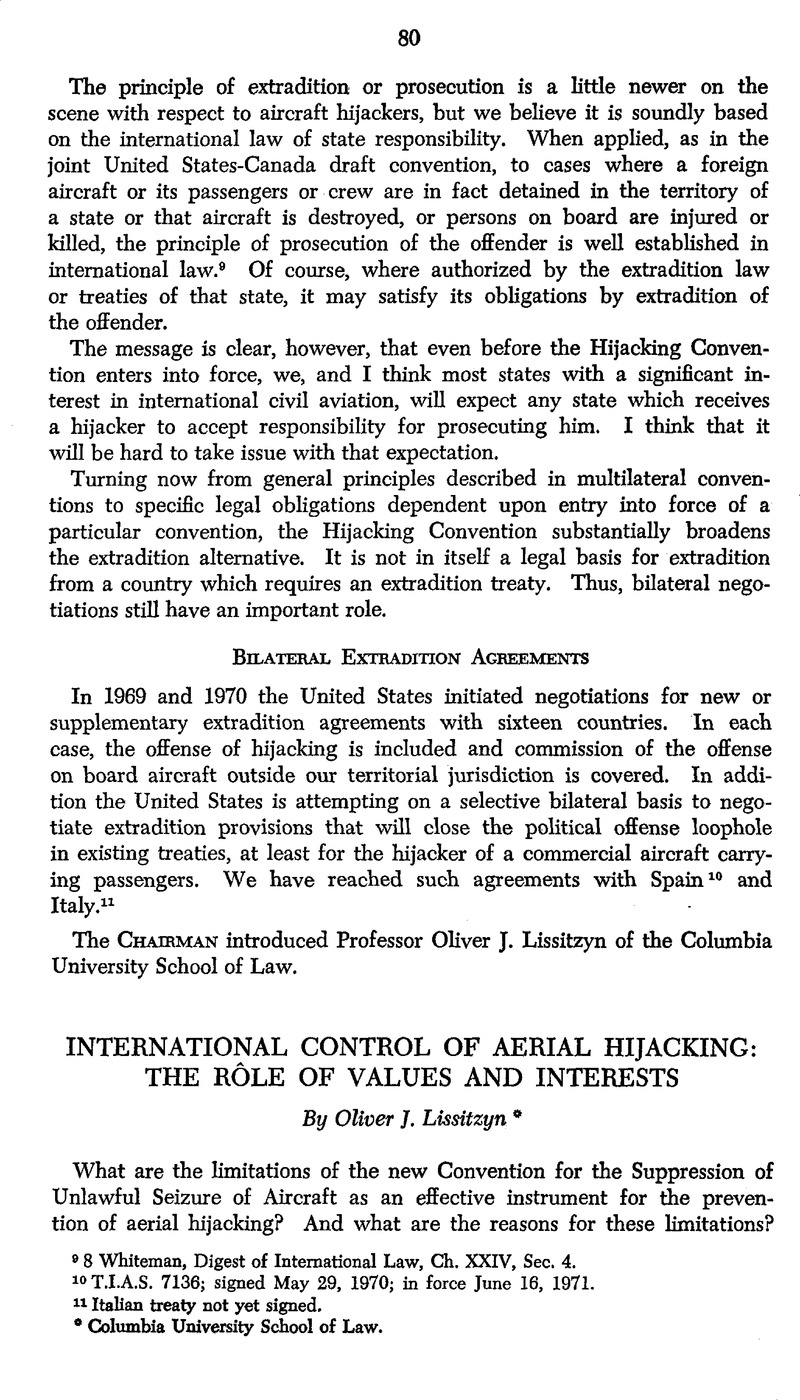No CrossRef data available.
Published online by Cambridge University Press: 28 March 2017

1 For statistical and other information on aerial hijacking, see Evans, A. E., “Aircraft Hijacking: Its Cause and Cure,” 63 A.J.I.L. 695 (1969)Google Scholar; Aircraft Hijacking, Hearings before the Committee on Foreign Affairs, U. S. House of Representatives, 91st Cong., 2nd Sess., Sept. 17-30, 1970; and U. S. Department of State, United States Foreign Policy 1969-1970, A Report of the Secretary of State 247-250 (1971).
2 Cf., in this connection, White, G., “The Hagne Convention for the Suppression of Unlawful Seizure of Aircraft,” ICJ Review, No. 6 (April-June, 1971), 39 Google Scholar.
3 U. S. Constitution, Art. IV, sec. 2.
4 See further, my paper, “Hijacking, International Law, and Human Righto,” in McWhinney, E. (ed.), Aerial Piracy and International Law (1971)Google Scholar.
5 75 Stat. 466, 49 U.S.C. §1472(i).
6 10 Int. Legal Materials 436 (March, 1971).